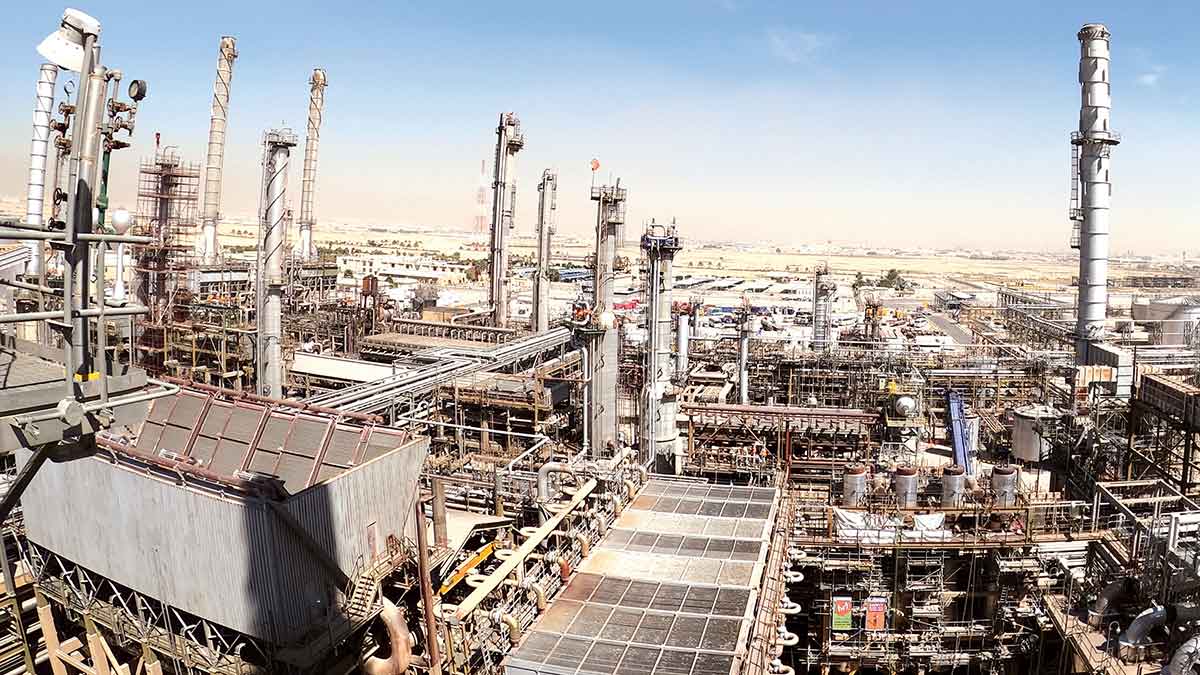Fast Work
Riyadh Refinery upgrade finished on budget and ahead of schedule

Global January 17, 2021
By working 24/7, Hydroprocessing Integrity project saved millions of man hours.
A significant upgrade at the Riyadh Refinery that was originally scheduled to take more than two years to complete was finished much earlier than anticipated.
Thanks to the dedication and safe work of more than 2,000 field professionals, the Hydroprocessing Integrity Project was completed in July — much earlier than anticipated. Although the work was conducted 24 hours a day and 7 days a week, the project was executed within budget, and the expedited work saved a total of 3.1 million man-hours while requiring only a single shutdown, instead of the two originally scheduled.
With this significant acceleration, the refinery’s operational efficiencies were optimized while also reducing the load on all charge heaters, which effectively slashed operational costs.
The scope of the project was considerable, as the team had to:
• Demolish 61 pieces of equipment weighing 3,638 tons
• Excavate and then backfill 3,013 m3 on-site to make space for new installations
• Design and install 17 new, large sized reactors and 27 exchangers
• Install 8,000 m of new piping
• Fabricate and erect 800 tons of steel structures
• Install 141,000 m of cables for power and instrumentation
• Execute 257 tie-ins
• Perform 339 hydrotesting packages.
Challenges and accomplishments
Although the shutdown took place during the peak of the COVID-19 crisis, the team persevered and safely completed the work within the allotted shutdown period.
The upgrades are designed to help Aramco meet domestic fuel demand in a reliable and cost-effective manner. Continued operation of the hydroprocessing units is essential for the operation of the refinery.
To optimize the refinery’s operations, the project’s scope of work focused on the upgrade of aging facilities, with eight new reactors and 12 combined feed/effluent exchangers to be installed in the hydrocracking unit to process an increased fresh feed rate.
Also, other reactors and exchangers were replaced to enhance production and to optimize profitability, including the naptha hydrotreater, kerosene hydrotreater, and platformer units that produce gasoline, jet fuel, and liquefied petroleum gas.
The final stretch
The final part of the revamp project was an upgrade of the hydrogen reformer unit with a goal of producing 97% pure hydrogen to support demand. Faced with the challenge of generating updated vectorized drawings and maps for a refinery that was built in 1979, the team used 3-D laser scans to survey and generate the needed data for the task, resulting in cost savings and expedited deliverables.
Major work had to be done in the hydrocracking unit due to aging reactors. Significant design changes and upgrades to more than 20 pieces of equipment were required to optimize the unit’s function and production capacity.
Another challenge came from material specifications and movement. Replacements had to comply with materials that are produced by only a few fabricators around the world. The eight hydrocracking reactors along with their 12 combined feed exchangers — amounting to a total weight of 2,670 tons — were procured and transported from Europe to Riyadh, requiring the project team to diligently work beyond normal hours to meet a challenging deadline.
Following material procurement and delivery challenges, the installation process posed new sets of challenges.
During the design period, the team adopted a modular construction approach to reduce the shutdown window. The huge modular equipment installations, with their massive tonnage sizes, posed a strain on manpower.
Therefore, the plan was revised and accelerated to execute the work with just one shutdown. This major undertaking was made possible by a team of dedicated professionals.



